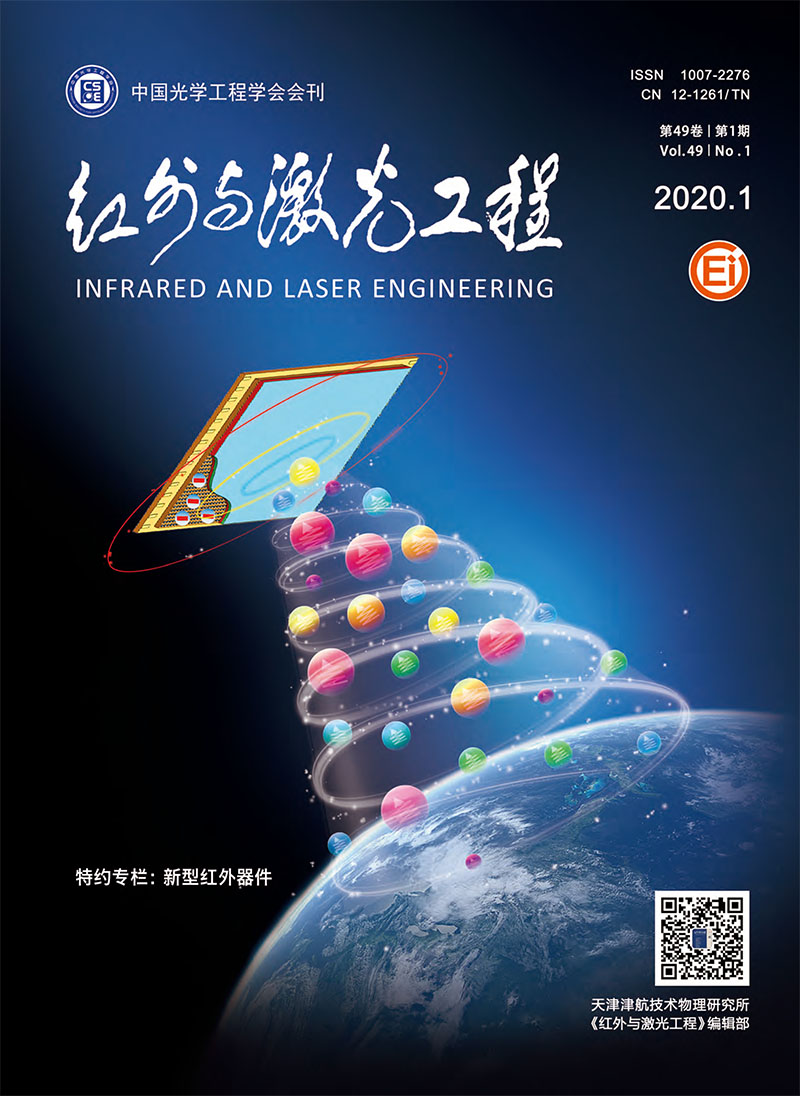Wang Cong, Chen Jiayi, Li Mengjuan, Wang Haichao, Li Bin. Centering of Ф1.3 m aspheric reflector based on interferometry[J]. Infrared and Laser Engineering, 2020, 49(1): 0113001-0113001(6). doi: 10.3788/IRLA202049.0113001
| Citation:
|
Wang Cong, Chen Jiayi, Li Mengjuan, Wang Haichao, Li Bin. Centering of Ф1.3 m aspheric reflector based on interferometry[J]. Infrared and Laser Engineering, 2020, 49(1): 0113001-0113001(6). doi: 10.3788/IRLA202049.0113001
|
Centering of Ф1.3 m aspheric reflector based on interferometry
-
Beijing Key Laboratory of Advanced Optical Remote Sensing Technology, Optical Ultraprecise Processing Technology Innovation Centre for Science and Technology Industry of National Defense(Advanced Manufacture), Beijing Institute of Space Mechanics&Electricity, Beijing 100094, China
- Received Date: 2019-10-05
- Rev Recd Date:
2019-11-15
- Publish Date:
2020-01-28
-
Abstract
Ф1.3 m concave ellipsoid reflector is the primary mirror of a remote sensor optical system, and its centering accuracy is demanding. Because the reflector had large aperture and long curvature radius of the vertex, it is difficult to center by centering instrument method, and the accuracy was low. By analyzing the compensating phenomena between the two kinds of off-center of aspheric surface, it could be seen that the accuracy of contact measurement centering by laser tracker was only 0.15°. The accuracy of contact measurement centering by three-coordinate instrument measuring instrument can reach 0.005°, but its range was limited, and repeated handling in optical processing will cause inconvenience. The Offner zero compensation test was used to verify the optical path for interference centering. The interference method converts the eccentricity of the mirror into the primary aberration of the detection system wavefront, which can also achieve an accuracy of 0.005°. The error source of this method was mainly the focus position error of interferometer, which was a systematic error. It could be eliminated by multiple centering measurements with rotating mirrors. The maximum deviation of off-center was only 0.023 mm and 0.002°, compared with the results measured by the three-coordinate instrument. The in-situ centering measurement of large aperture concave aspheric mirror was realized.
-
References
|
[1]
|
Li Xuyang, Yang Hongtao, He Tianbing, et al. Design of a new type on-axis three-mirror-anastigmat optical system[J]. Acta Photonica Sinica, 2012, 41(1):31-35. (in Chinese) |
|
[2]
|
Ma Zhen, Li Yingcai, Fan Xuewu, et al. Study on optical centering of aspheric mirror by interferometry[J]. Acta Photonica Sinica, 2008, 37(7):1455-1458. (in Chinese) |
|
[3]
|
Guo Lingling, Ren Jianyue, Zhang Xingxiang, et al. Calculation method of geometrical parameters of large diameter off-axis aspheric optical elements:China, 103591888[P]. 2013-10-28. (in Chinese) |
|
[4]
|
Pan Junhua. The Design, Manufactury and Test of the Aspherical Optical Surfaces[M]. Suzhou:Suzhou University Press, 2004:2-5. (in Chinese) |
|
[5]
|
Qiu Gufeng, Guo Peiji, Xie Bin, et al. Mathematical model of contacting aspheric surface contour measurement[J]. Opt Precision Eng, 2007, 15(4):492-498. (in Chinese) |
|
[6]
|
Li Kexin, Yuan Liyin, Hao Peiming, et al. Design of null compensator to concave aspheric mirror with large diameter and large relative aperture[J]. Optical Instruments, 2009, 31(4):44-48. (in Chinese) |
|
[7]
|
Fan Junling. The research on the testing methods of large aperture aspheric mirror[D]. Harbin:Harbin Institute of Technology, 2007:34-36. (in Chinese) |
|
[8]
|
Li Ling, Zhao Ye. A Gravity unloading method of on-ground alignment for large aperture remote sensor[J]. Spacecraft Recovery & Remote Sensing, 2016, 37(5):69-76. (in Chinese) |
|
[9]
|
Li Ling, Wang Yun, Liao Zhibo, et al. High precision online measurement technology in assembly and adjustment of Gf-4 camera[J]. Spacecraft Recovery & Remote Sensing, 2016, 37(5):77-85. (in Chinese) |
|
[10]
|
Guo Peiji,Yu Jingchi. Improving precision of null lens method with correction technique[J]. Opt Precision Eng, 2006, 14(2):202-206. (in Chinese) |
-
-
Proportional views

-









 DownLoad:
DownLoad: